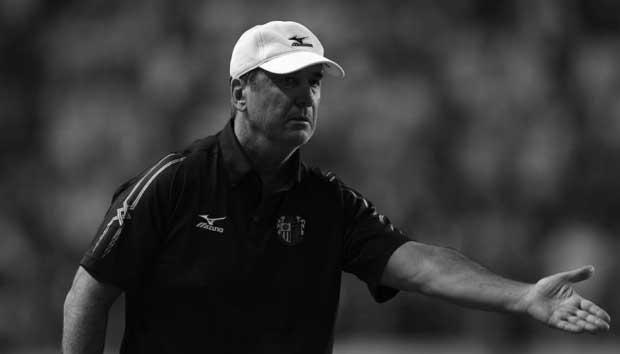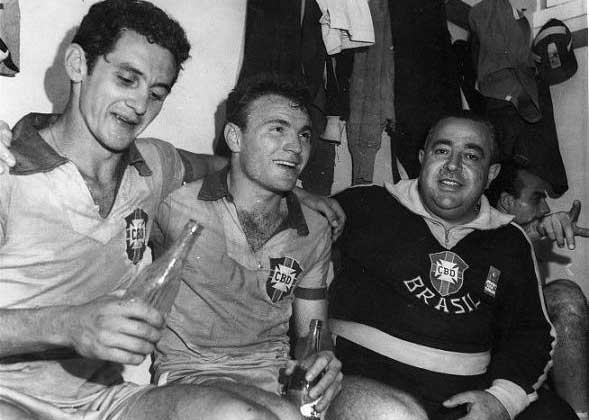For a decade now, around this time of the year, the Footecon event has taken place in Rio. Its tag line – ‘the main forum of the football industry in the Americas.’ It began life more than anything as a conference of coaches, and at heart that is what it remains, though over the years it has tagged on elements of business.
Time to declare an interest; I have attended every edition of Footecon. I owe the event a massive debt of gratitude. It has taught me more than I care to confess. But I will not be attending this year. Nor will anyone else. “See you in 2014,” says the event’s website. But it is not true. There will be no Footecon this year – apparently due to a lack of sponsorship. But surely, after the events of 2014 there should be an excess of desire to stage the event. One would hope that Brazil’s football community would be desperate to get together and reflect; the 7-1 in the World Cup semi final, not getting a team through to the semi finals of the Copa Libertadores despite a huge financial advantage over continental rivals, or even the business question of how to run (and especially price) the impressive new stadiums – there is almost too much to talk about for a two day forum.
One of the coaches I was hoping to hear in such an environment was Levir Culpi, who has made such an impression with Atletico Mineiro since returning from Japan. “I didn’t come back with an out of date mentality,” he said after his team had won the Brazilian Cup. “It’s Brazilian football that is out of date in terms of tactics and discipline. People think that I went to Japan to teach football, but in fact, I was doing the learning, and I’ve brought things back here.” His words have been echoed by Oswaldo de Oliveira, another Brazilian coach with Japanese connections. Asked on his return if there was a danger that spending so much time in Japan might have caused his career to stagnate, he replied that the opposite was closer to the truth; staying in Brazil carried with it the risk of stagnation.

Levir Culpi managing Japanese side Cerezo Osaka
Remember that period maybe three years ago? When Brazil’s clubs started paying big salaries, and there was lots of talk of the local league soon being able to rival the major European championships? It seems a long time ago now. More recently, some of the more business minded in Brazil have even become concerned about the league being overtaken and playing second fiddle to MLS in the United States.
It is, then, much more than a question of money. It is one of structure and organisation and ideas – both on and off the pitch.
On the field, it seems evident that the story of Brazilian football is a classic cautionary tale of the perils of success. As old as the quills, the story goes like this; a process leads to success, which is then treated as a birthright rather than the result of a process. In short, people forget what it was that made them successful in the first place. History is rewritten.
These days it is all but unthinkable to imagine a foreigner taking charge of the Brazilian national team. But it very nearly happened in 1958. Joao Havelange, then head of the local FA, wanted Fleitas Solich, the Paraguayan who had led Flamengo to three consecutive Rio state titles. But Havelange needed the support of Sao Paulo, where his ally Paulo Machado de Carvalho lobbied successfully for Vicente Feola to be given the job. And once Brazil had won the trophy, what need did they have for foreigners? Football was now seen as something intensely patriotic, writers such as the gifted and hugely influential Nelson Rodrigues pushed the line of the sport as a vehicle for the innate virtues of Brazilian-ness.
What was lost in all of this was the way that Brazilian football had been so wonderfully open minded. It was never too proud to learn from the Uruguayans, the early pace setters, or the Argentines. Uruguayan coach Ondino Viera was a figure of massive importance, a master strategist credited by many with launching the 4-3-3 system with Vasco da Gama in the mid 1940s. This was an era of curiosity and experimentation. The back four was pioneered in the search for defensive balance – that 1958 World Cup winning side is remembered for its attack, with Didi directing operations from centrefield, Garrincha causing havoc on the right wing and the exuberant young Pele along with Vava ever alert in the penalty area. But it is also significant that they did not concede a single goal until they reached the semi final. All of that individual talent was housed in a well defined, ultra-modern collective context – the product of years of trial and error from coaches who, incorporating ideas from Uruguay, Argentina and Hungary, were operating at the cutting edge.

Orlando, Mazzola, and coach Vicente Feola celebrate a victory at the 1958 World Cup
So much of this seems to have been lost. There is, for example, not a single Brazilian coach in top level European football – where the best players are congregated and most of the leading ideas are now generated. Once at the crossroads, Brazilian football now lives in inglorious isolation, staring at its belly button and contemplating its absurd, anachronistic regional championships. There is a big wide world out there. Brazil have conquered it in the past and will surely do so again in the future – with its giant population, tradition and absence of other mass sports, Brazilian football does not need to operate at potential to be competitive. But it could be – as it once was – so much more. It could be inspirational. To do so, it needs to rediscover the broad minded, internationalist spirit which currently lies buried under decades of rubble.
![]()